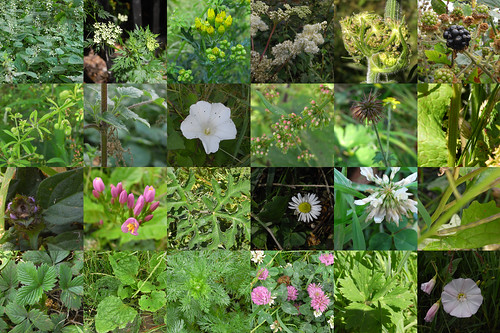30.8.15
29.8.15
the event
On
Sunday 30th August 2015 at the Pavilion, The Pleasure Gardens, Roath
Park I will list the names of wild flora in the park and
make cyanotypes with Paul Hetherington. We are up for conversations about
plants, plant names and light.
28.8.15
Cyanotypes and Anna Atkins
by Paul Hetherington
Cyanotypes
are probably the earliest form of photography.
They
are created by combining two simple chemical solutions, which, when coated on
paper, dried and exposed to light rich in ultraviolet, undergo a reaction which
produces a deeply saturated blue pigment, sometimes known as “Prussian blue”.
If
something is placed between the light source (usually the sun) and the paper,
such as a photographic negative or a plant specimen, a mask is formed and an
image is created on the paper. After
sufficient exposure has been given, the paper is washed in water and the blue and white image
is revealed. As it dries, the image darkens and increases in contrast.
Cyanotypes
of the kind created and presented here cannot be made directly with a camera,
but depend entirely on making a print by close contact between subject and the
light-sensitive paper. Images so created by the use of objects (such as leaves
and stems of plants) are often known as “photograms”.
Invented
in about 1842 by Sir John Herschel (astronomer and generally brilliant
scientist), the cyanotype process was originally intended by him to be used for
copying drawings and notes, but his friends and acquaintances - notably Anna
Atkins and William Fox-Talbot, but there were others - experimented further with the process as a
way to capture images of the world about them.
Anna
Atkins, born in 1799, had a particular interest in botany, and created a number
of books of British flora in the 1840s and 1850s using cyanotypes. She is
regarded in many photographic histories as the first female photographer, and
even perhaps the first “scientific photographer”.
Her
books and prints survive in a number of collections and museums, and though
increasingly fragile (most are at least 150 years old), they retain their
intrinsic beauty and delicacy of detail. An example can be seen below.
A
process that proceeds by light, and particularly by the agency of ultraviolet
light, seemed very appropriate as a very direct visual complement for Maura
Hazelden's explorations of plants, naming and identity, and it seems impossible
to ignore the poignant echo of Anna Atkins' work when considering it.
21.8.15
20.8.15
1.8.15
30 years is a long time part 4
A side project is occuring: looking at old photos from around the Rec
and Roath Brook Garden's area and the streets just to the north and in
some cases retaking. [the ...& some of the title of this blog]
Roath Brook Gardens - Sandringham Road and The Rec 1985 and 2015
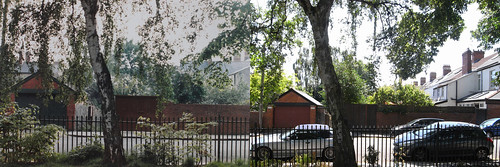
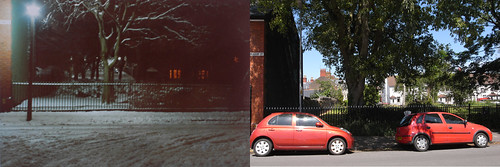

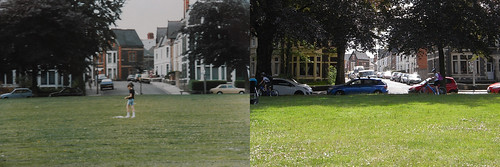
Using a very different lens in The Rec in 1985. Copper beeches have been planted and grown a lot in 30 yeras.
Roath Brook Gardens - Sandringham Road and The Rec 1985 and 2015




Using a very different lens in The Rec in 1985. Copper beeches have been planted and grown a lot in 30 yeras.
30 years is a long time part 3
A side project is occuring: looking at old photos from around the Rec
and Roath Brook Garden's area and the streets just to the north and in
some cases retaking.
Wandering the lanes to the north of Roath Brook and Waterloo Gardens. There was a telephone box with the words "what about the sex beat baby?" written on it. I can;t find the photo - I can see it on the wall of one of the interior shots of a hot evening in June...there were a lot of spalshes around the area
A lad on his bike asked if I'd take his photo - I did.
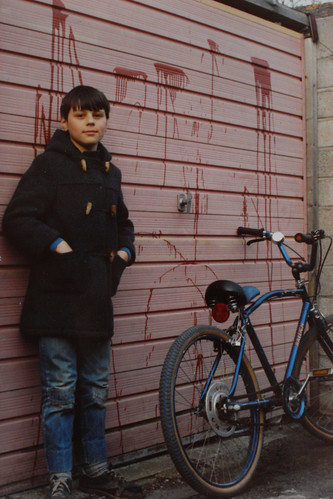

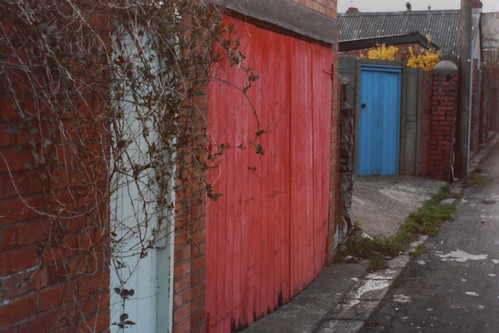
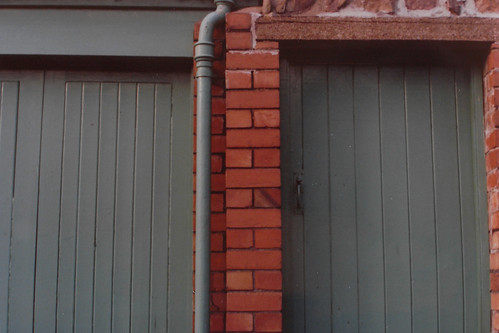
Wandering the lanes to the north of Roath Brook and Waterloo Gardens. There was a telephone box with the words "what about the sex beat baby?" written on it. I can;t find the photo - I can see it on the wall of one of the interior shots of a hot evening in June...there were a lot of spalshes around the area
A lad on his bike asked if I'd take his photo - I did.




Labels:
1985,
caerdydd,
cardiff,
film,
graffiti,
lanes,
made in roath,
pentax mx,
photographs,
photos,
roath,
roath park,
y rhath
30 years is a long time part 2
A side project is occuring: looking at old photos from around the Rec
and Roath Brook Garden's area and the streets just to the north and in
some cases retaking.
An assortment of images from the snow in either mid January or Mid February 1985 - we climbed into Roath Mill Gardens and made a huge snowball, which we then turned into an iceberg: we pushed it into the brook.
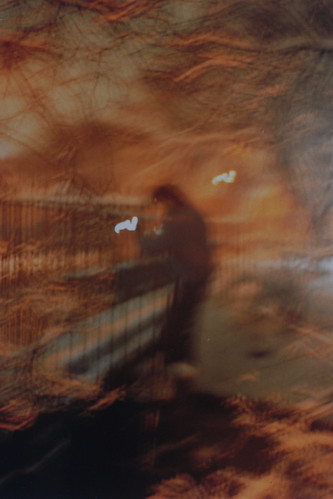
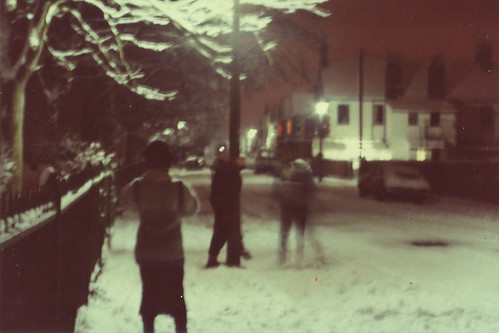
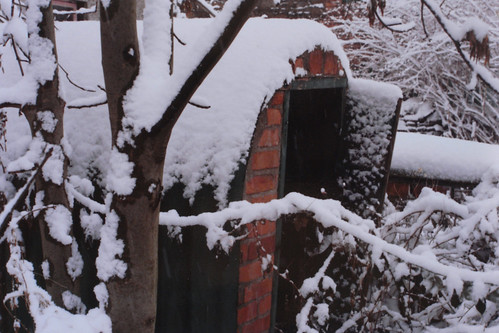
An assortment of images from the snow in either mid January or Mid February 1985 - we climbed into Roath Mill Gardens and made a huge snowball, which we then turned into an iceberg: we pushed it into the brook.



30 years is a long time part 1
A side project is occuring: looking at old photos from around the Rec and Roath Brook Garden's area and the streets just to the north and in some cases retaking. [the "... & some" of the title of this blog]
First Balaclava Road, where I lived in 1985
LINK to full size of image below

hot evening in June after the HND 2d Design shows were all done and dusted
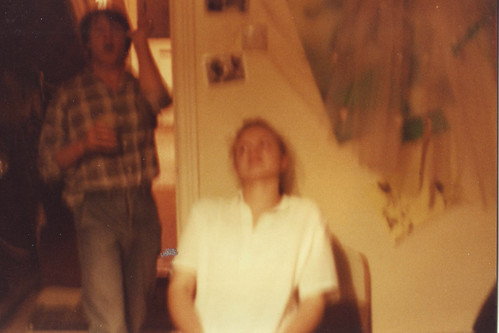
my other garden - Roath Brook Gardens
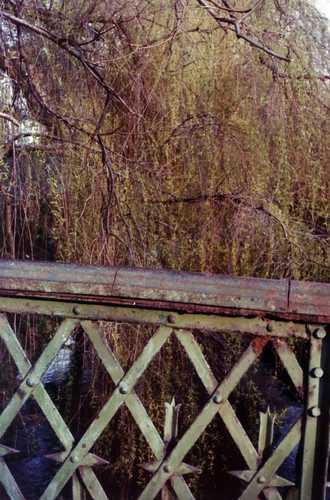
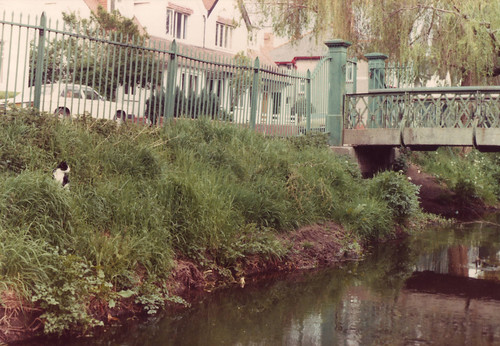
First Balaclava Road, where I lived in 1985
LINK to full size of image below

hot evening in June after the HND 2d Design shows were all done and dusted

my other garden - Roath Brook Gardens


Subscribe to:
Comments (Atom)







![casgliad = collection [sych - dry]](https://farm1.staticflickr.com/636/20549431129_82562f94b9.jpg)
